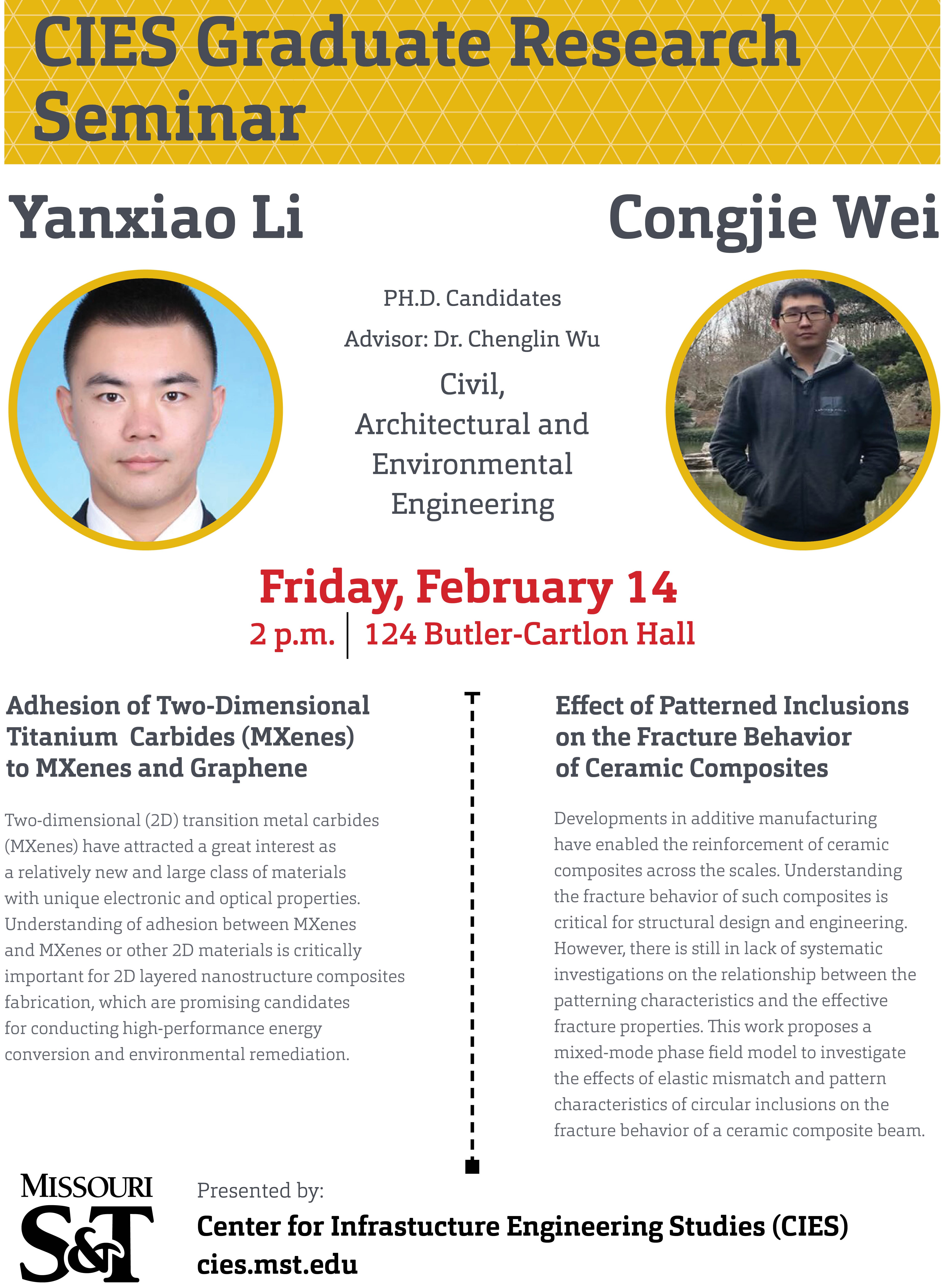February 2020 Seminar
Graduate Student Research

CIES Seminar - Graduate Student Research
Friday, February 14, 2020
2:00p.m. - 3:00 p.m.
124 Butler-Carlton (Civil Engineering) Hall
Presenters: Yanxiao Li & Conjie Wei
Ph.D. Candidates (Advisor: Dr. Chenglin (Bob) Wu)
Department of Civil, Architectural and Environmental Engineering
Missouri S&T
Topic #1: "Adhesion of Two-Dimensional Titanium Carbides (MXenes) to MXenes and Graphene"
Abstract: Two-dimensional (2D) transition metal carbides (MXenes) have attracted a great interest as a relatively new and large class of materials with unique electronic and optical properties. Among 20 different kinds of MXenes, Ti3C2Tx and Ti2CTx are most widely investigated. Understanding of adhesion between MXenes and MXenes or other 2D materials is critically important for 2D layered nanostructure composites fabrication, which are promising candidates for conducting high-performance energy conversion and environmental remediation. Herein, through atomic force microscopy (AFM) experiment on Ti3C2Tx-Ti3C2Tx, Ti3C2Tx-Ti2CTx, Ti3C2Tx- 1-5 layer graphene interfaces using a Ti3C2Tx functionalized spherical tip, adhesion energy was measured respectively. To obtain adhesion energy more accurately, the Maugis-Dugdale theory which considers surface roughness was applied to convert the AFM measured adhesion force to adhesion energy. Our preliminary showed that the adhesion energy between Ti3C2Tx and Ti3C2Tx or Ti2CTx MXenes are in the same level of the adhesion energy between Ti3C2Tx and graphene. In addition, no layer dependency was observed with the MXene adhesion measurements.
Topic #2: "Effect of Patterned Inclusions on the Fracture Behavior of Ceramic Composites"
Abstract: Developments in additive manufacturing have enabled the reinforcement of ceramic composites across the scales. Understanding the fracture behavior of such composites is critical for structural design and engineering. However, there is still in lack of systematic investigations on the relationship between the patterning characteristics and the effective fracture properties. This work proposes a mixed-mode phase field model to investigate the effects of elastic mismatch and pattern characteristics of circular inclusions on the fracture behavior of a ceramic composite beam. The modeling results have shown that the stiff and compliant inclusions can either repel or attract the crack. This crack propagation altering effect can be controlled by altering the pattern characteristics. In addition, utilizing the relationship between the pattern characteristics and resulting fracture path, fracture growth can be controlled with appropriate inclusion properties. The targeted enhancement in fracture toughness can also be predicted using an effective fracture model linked with the underlying fracture path computed by the proposed mixed-mode phase field model.
